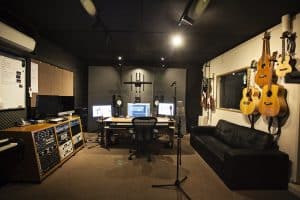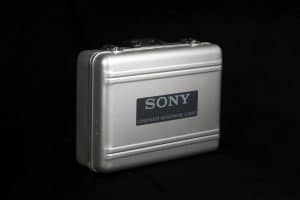Vocal Autotune Demystified
Autotune of vocals, or any other monophonic instrument, is a lot different to what it used to be in the recording studio. These days there are many methods and tools available for tuning the pitch of a vocal. In this article we hope to shed some light on the touchy area of vocal pitch correction. We hope that this will make clients more aware of what services are available to them when they record in our Sydney recording studio, Crash Symphony Productions.
Pitch Correction Tools
There are many different methods to getting the best vocal performance on a song. The first approach is the most obvious; sing the song until you feel that it is the best performance that you, as an artist, are capable of achieving in the studio. To attain this goal we either get the vocalist to sing the song through in its entirety or we get them to sing section-by-section. Section-by-section means that we loop a verse or a chorus, sometimes even a single line, and the vocalist will repeat the line over and over until either the producer, singer or both feel that the line has been captured with the intended performance for the song.
Line-by-Line or Verse-by-Verse?
If this approach is taken line-by-line or verse-by-verse it can sum to the whole vocal line sounding great. For strong singers who know their content well and who are recording consistently strong takes, this might not be the best approach. For these vocalists it is better to sing the whole song through in one go, and then repeat. sometimes the ‘feel’ can be lost when each line is repeated in series. There is an added problem in that a singer’s voice will warm up and change the more that they sing.
If they are approaching the song line-by-line then their voice will be sounding very different by the time they get to the last parts of the song. All these variables need to be managed by the producer. It is the producer’s job to assess the skill level, morale, and voice tone of the singer and then choose which method will best suit the project.
Getting that Comp
Every time a part is recorded it is referred to as a ‘take’. Once all the takes are recorded for a vocal line it is then time to cut all the takes together so that they form one long continuous vocal recording. This is called the ‘Comp’ which derives its name from the word composite. If the composite is still not in tune to the hopes of the producer and artist then the following methods are employed. Firstly, the artist can multitrack their vocal, or, the vocal can be autotuned, or, finally, the vocal can be Melodyned. A combination of all three methods is often common in modern productions. Let’s explain how all these methods of pitch enhancement help the production process.
The Magic of Multi-tracking
Multi-tracking is where the singer will sing along with their vocal line on another channel and attempt to match the vocal line extremely closely. The ideal scenario is that they sing along to the vocal line so closely that it is hard to tell that their is even another vocal line present. This can be double-tracked, tripled-tracked or even tracked numerous times.
Famous artists like Barbara Streisand and Freddy Mercury were know for doing up to 30 close tracks per lead vocal. The point of this is that the pitch error on one vocal line is covered up by the ‘in-tune’ of another vocal. The slight out-of-tune nature of the vocals sum together to give a vocal texture that sounds like one single lead vocal that is much bigger and more in tune than that of the single vocal line. A good analogy is that of the symphony orchestra. If a single violin were playing it would sound very thin.
Tuning Nuances
All the tuning nuances of that violin would be very audible if it were playing away on its own. Once we start integrating more violins into a section the pitch errors of one are no long so obvious and the sound becomes larger. One common misconception about doubling up vocal lines is the erroneous approach of playing the same vocal line on two tracks. For example, the singer records the vocal and then copies and pastes it to another track and plays them both back simultaneously.
The reality is that all this does is make the single vocal sound louder. It will still be perceived as one solitary vocal. It is actually the differences that exist between the two or more vocals that sum together to give a bigger and more in-tune vocal texture. Unfortunately, the short cut of cutting and pasting the same vocal line x number of times just doesn’t work. It needs to be seen and heard to be believed.
Autotune Saves the Day
If the multi tracked vocal approach isn’t the sound that is trying to be achieved and a single vocal line is what is necessary then Autotune may be required. Traditionally, Autotuning a vocal involves placing the tuning plugin on the channel insert where the vocal line exists and letting this program work on the vocal in realtime. As the vocal line passes through the Autotune plugin it will operate on it and pull the pitch into key.
It does this automatically, hence the name Auto-tune. There are many parameters on these sophisticated pieces of software. They allow the engineer to create a subtle amount of pitch correction through to an extreme Autotune. These extreme autotune methods were first made famous by Cher in her song “Believe”. This song is an example where the Autotune plugin was used as an effect. Not as a cure for bad singing. Less aggressive settings are more appropriate for fixing a vocal that is innately sung badly.
Melodyne Surgery
If a more surgical approach is required on the vocal then Melodyne is the answer. This is an intensely powerful program that allows the engineer to manipulate the content of a vocal with great flexibly. Melodyne enables manual pitch correction of individual notes, and even parts of individual notes. Notes can be stretched in time or compressed and shortened.
The tone and gain of an individual note can be altered and much, much more. This program is perfect for a vocal that requires correction but the effects of Autotune are not subtle enough. Melodyne is the sniper rifle of the audio pitch correction world, whereas Autotune is the shotgun.
Tune the lead vocal with Melodyne. Then run a very light Autotune over the lead vocal. When it is imported back into the DAW (Digital Audio Workstation). This corrects any minor pitch anomalies or ‘micro bumps’. Often this ‘perfect’ lead vocal becomes the primary template for double- or triple-tracking the lead vocal.
Reliant on Reverb?
Finally, when all these techniques have been employed, reverb serves as the icing on the cake. Reverb has the effect of making tuning sound better. Notes that are in tune tend to carry over into sections where there might be pitch anomalies.
So, in a way, there is a kind of horizontal spread of the pitch load. The problem with relying on reverb! To save the day is that too much reverb can really effect the definition of the vocal. It is generally better to apply reverb to something that already sounds great! Not to a vocal that needs it to sound in tune! Some songs don’t require a vocal to be drenched in reverb. Nonetheless, reverb definitely has a positive impact on how the vocal pitch is perceived.
Conclusion
Hopefully this article gives you some insight? How a vocal can be treated to get the best pitch performance for the artist. If you have any further questions don’t hesitate to contact us at Crash Symphony Productions.





